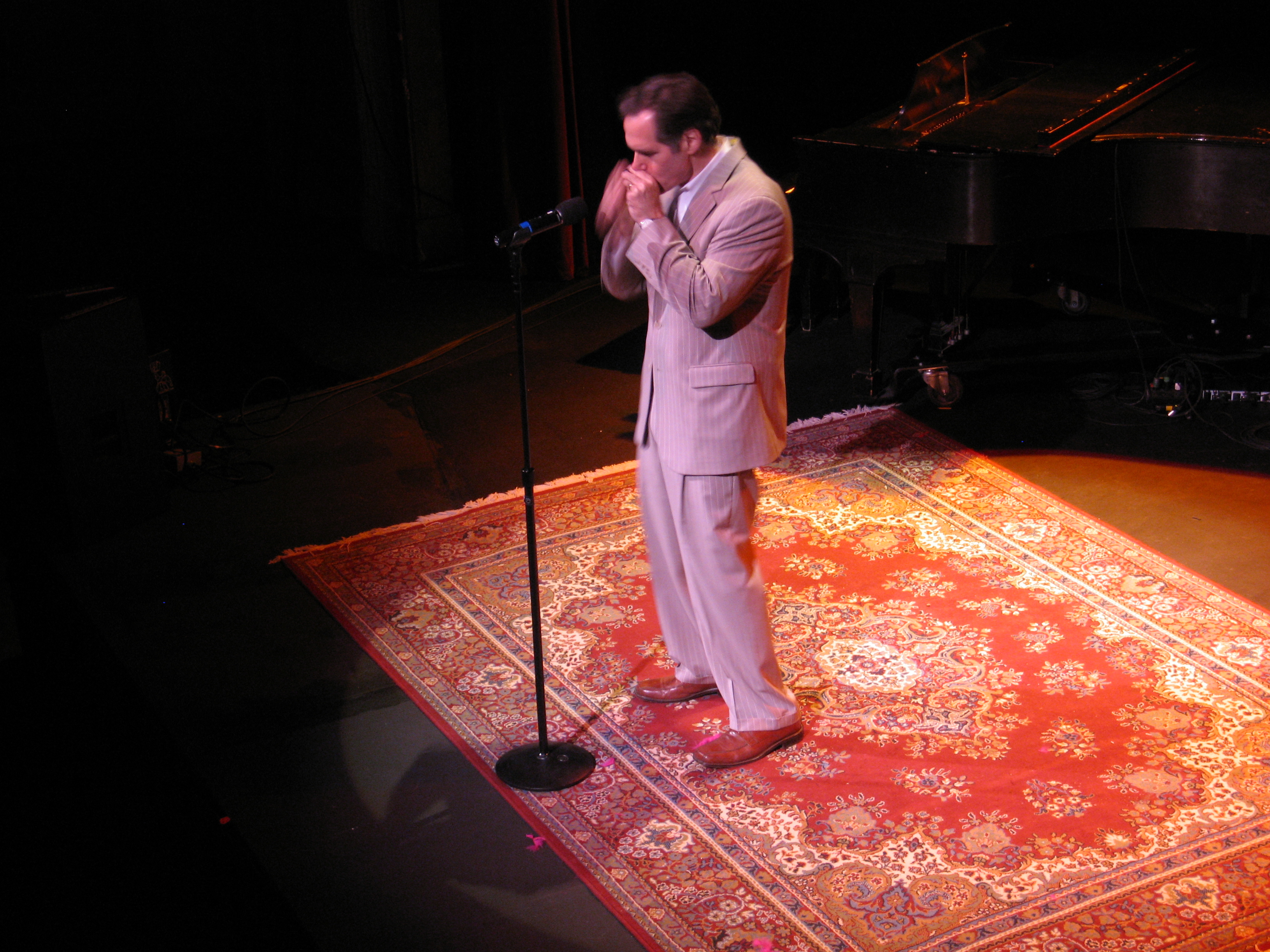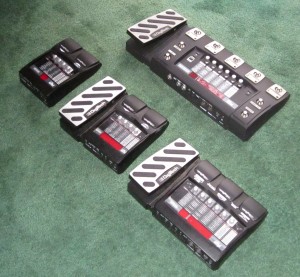
RP355 versus RP500: more is not necessarily better (but it can be!)
I’ve been working lately on patches for the Digitech RP500, the next step up in the RP series from the RP355. New RP500s sell for around $300, a hefty step up from the RP355’s $200 price tag; but used RP500s in excellent condition can be found at Guitar Center online for less than $150. This means that an RP500 is within the price range of even a budget-conscious buyer. Should that buyer prefer an RP500 over an RP355?
Well, I dunno. The RP500 gives you more than the RP355 in some ways, but not in every way. And “more” is only “better” when you can really use the additional features.

One way in which “more” is not necessarily “better” is the size and weight of the two devices. As you can see from the photo, the RP500 is a LOT bigger than the RP355. You can easily stuff the RP355 into a shoulder bag–you can’t do that with the RP500. And of course, the RP500 takes up more room on a stage, too.
The RP500 also offers “more” in terms of the numbers of parameters you can adjust for any patch, and in some ways that’s definitely better. In particular, the 500 gives you both amp EQ (based on the particular amp model you’re using) and overall EQ (which is independent of the amp modeling). That lets you set up the amp EQ to get the sound you want from the amp (model), then adjust the overall EQ so that it works in the context of the band and the song (for example, by reducing low bass frequencies to prevent your sound from colliding with the bass guitar). If you use the RP with a looper, like I do, you can easily craft a set of patches for a particular looped song that fill the frequency spectrum nicely without overloading anything.
The RP500’s added footswitches, which make it easier to navigate various tone controls in performance, are definitely convenient, and it’s terrific that one of those switches is dedicated to tap tempo for delay. The absence of tap tempo delay on the RP355 is a problem for a device whose delays are otherwise excellent, especially for players with aspirations to working in electronic dance-oriented styles. The 500 fixes that. The dedicated footswitches on the 500 seem to me to be both easier to use, and less likely to trigger accidentally (which can be a problem with a 355 when there’s a drunken guitarist in the vicinity) than the 355’s relatively clumsy switches, which are very easily (and too often accidentally) triggered.
You can even put the 500 in “pedalboard” mode with a single button press, after which dedicated footswitches control distortion, delay, reverb, and FX on/off, AND you can still change patches with a footswitch press. Pretty cool for making instant, dramatic changes in performance, and for a guy like me, who might change patches anywhere from three to five times in a single song, extremely convenient. Also nice in terms of real-time control is the dedicated button for bypassing amp and cab modeling while leaving the FX chain intact.
Finally, the 500 includes a bunch of new amp and cabinet models, as well as additional FX, and these can be handy. I especially like the Gibson GA40 amp and cab models, which have a screechy roar that’s like a Fender Champ on steroids.
One thing the 355 has that the 500 doesn’t is the A/B channel switch, which allows the user to change amp model, cab model, and EQ instantly without disrupting the rest of the FX chain. This effectively doubles the number of user patches in the 355 (to 140), and it’s very useful for things like emulating an organ.
So what’s the deciding factor? The most important factors to me are the footswitches on the 500, which definitely make it a more versatile and easier-to-use device for live performance, and device size and weight, which tip the scales toward the 355.
For a long time, the RP355 was my preferred device, and it still is for situations where light weight and small size count. I recorded my most recent sessions with the Italian band Lowlands in a hotel room on the RP355, and it was everything I wanted for that gig. But now that I’ve dug deep into the RP500 and seen how cool the expanded EQ and footswitches are, it’s my first choice for live performance when I don’t need to worry about size and weight.
Feel free to make your own decision–it’s pretty tough to go wrong with either.
Related Posts
6 Comments
Leave a Reply
You must be logged in to post a comment.
WHAT’S NEW
Categories
- Audio/Video
- Blog
- Blue Future
- Digitech RP Tricks and Tips
- Discography, CDs, Projects, Info, Notes
- Featured Video
- For the Beginner
- Gallery
- Hunter's Effects
- Hunter's Music
- Huntersounds for Fender Mustang
- Meet the Pros
- More Video
- MPH: Maw/Preston/Hunter
- My Three Big Contributions
- Player's Resources
- Pro Tips & Techniques
- Recommended Artists & Recordings
- Recommended Gear
- Recorded Performances
- Reviews, Interviews, Testimonials
- The Lucky One
- Uncategorized
- Upcoming Performances
- Zoom G3 Tips and Tricks
Hey Richard,
I was wondering about floor space for the RP500, which you’ve addressed here, and what kind of bag do/would you use to carry the RP500 around. I could easily fit the RPx400 in a pedal/gig bag together with mic, cord and a box full of harps – presumably the RP500 would now take up most of that space. Any ideas?
Thanks,
Eugene
Hi Eugene,
I currently carry my RP500+looper+footswitch for the looper attached to my pedal board, which I carry in a soft case keyboard bag designed for a 61 note keyboard.
However, if I had to carry something in a shoulder bag, I’d just take the 355.
Man,
I have a 355, and I now wanna get a 500 or 1000, just because the footswitches, construction, and the way to play alive.
Your review was very illustrative to me, and I’ll not sell my 355… I’ll just buy the 500, and work with both!
Good idea. The RP355 makes a good backup for the 500, too.
Hi Richard,
I’m pretty broke right now
I see a lot of rp350’s onsale on ebay. whats the difference between this and the rp355 and do you have patches that will work for the Rp350
@Richard: Yes, I sell a full set of patches for the RP350. It’s almost the same as the RP355, and it’s a good sounding device. I think you’re better off shopping at guitarcenter.com–they have a good selection of used RP350s starting at about $60, and RP355s selling for $90 and up, and they offer a 15-day warranty, which is enough to find out whether the thing has any big problems.
Go to guitarcenter.com, go to the Used Gear section, and search on “RP350” or “RP355.”
Happy Holidays!